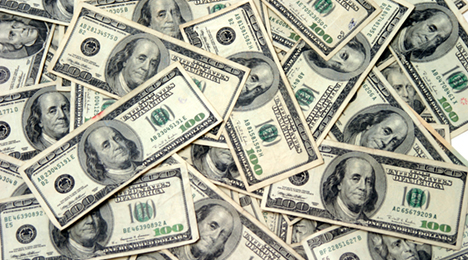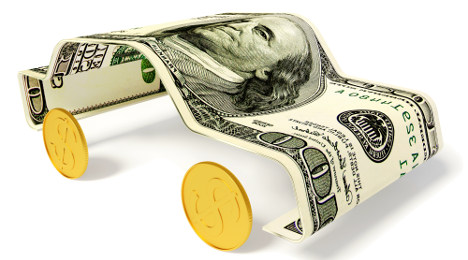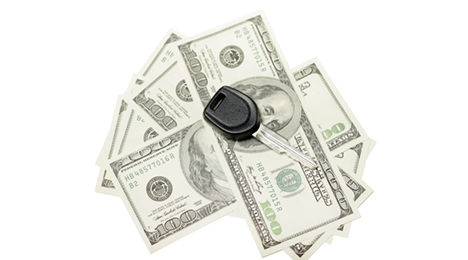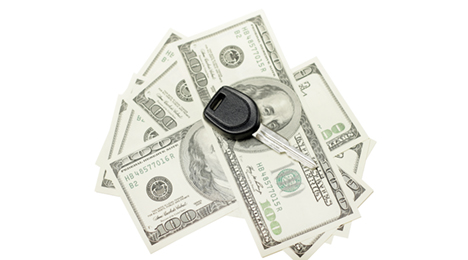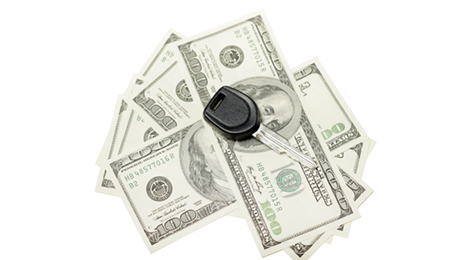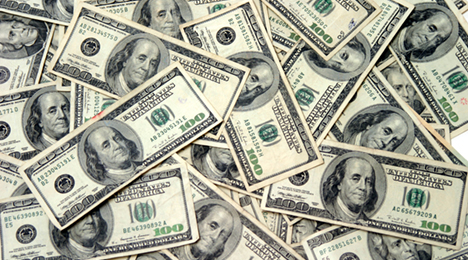The latest auto ABS commentary from Fitch Ratings not only recapped analysts’ look at the December data but also delivered projections for what might happen in this space during the remainder of the year.
Looking deeper at subprime auto loan ABS, Fitch is forecasting that annualized net losses in this tier to “stay elevated” in the 10 percent to 12 percent range, but that the forecast remains “within our expectations for Fitch-rated transactions.”
Fitch reported subprime delinquencies reached 5.45 percent in December, up 16 percent year-over-year and eclipsing rates recorded earlier last year. The reading also was 41 basis points higher than during the recent recession.
Analysts pegged subprime annualized net losses at 10.41 percent in December; a figure stable on a sequential basis by 18.7 percent higher year-over-year.
Fitch explained its subprime indices climbed to near peak levels in 2016, but the two large subprime ABS issuers rated by the firm continue to have delinquencies and losses within the agency’s expectations.
“The smaller lenders along with recent new entrants are the major contributors to the declining trend in subprime performance in 2016,” analysts said.
Fitch went on to clarify that ongoing declines in subprime auto ABS performance are indicative of weaker underwriting in 2013 through 2015 vintage securitizations, driven by heated competition and growth of less-established finance companies.
The firm also acknowledged subprime losses have risen during the past year despite low unemployment and healthy used-vehicle values as measured by the Manheim Used Vehicle Index. The unemployment rate in December was 4.7 percent and the index stood at 124.7, both at “strong” levels, according to analysts.
The firm mentioned subprime delinquencies on the Fitch-rated AmeriCredit and Santander Consumer USA ABS shelves slowly moved higher in 2016, with year-over-year increases of 10 percent to 15 percent but were largely consistent with rates recorded in the past five years.
Analysts said these two platforms accounted for 70 percent to 85 percent of the subprime index from 2010 through 2014, but have since declined to approximately 50 percent.
“Hence, the smaller and many new subprime lenders (not rated by Fitch) comprise a greater percent of the index today and are recording higher delinquencies and losses driving the negative trend in the indices,” the firm said.
Fitch’s subprime index increased from $10.5 billion in mid-2010 to nearly $40 billion at the end of 2016, highlighting the growth of subprime auto financing and rise in vehicle sales. In early 2010, there were 12 active ABS shelves in the index compared to 21 today.
Fitch pointed out shelves including those sponsored by Exeter Finance, DriveTime, Flagship Credit Acceptance and Westlake Financial Services have all see significant growth in recent years.
Fitch's auto loan ABS indices totaled $98.5 billion of outstanding securitized collateral as of the close of 2016, of which 60.8 percent was prime and 39.2 percent subprime. Outstanding auto finance debt in the U.S. recently reached more than $1.1 trillion, according to the Federal Reserve of New York, and Fitch’s auto ABS indices account for nearly 10 percent of that total amount.
Along with their latest assessment of the U.S. prime and subprime auto loan asset-backed securities (ABS) sectors, S&P Global Ratings analysts this week discussed how much alternative data has become a crucial component of their examination of subprime auto finance market.
S&P Global Ratings acknowledged that many subprime finance companies have incorporated alternative data into their underwriting process as they approve more loans to consumers without a FICO score. Because these finance companies have invested heavily in their own custom scoring models that take into account numerous attributes of a potential obligor, the vehicle to be financed, and the potential loan structure, credit analyst Timothy Moran explained that — in theory — these credit providers are better able to assess the consumer's ability and willingness to pay than in the past.
“New technology has been developed to allow for more in-depth credit application reviews beyond FICO scoring, suggesting that nontraditional or alternative data' have become increasingly important in forming a more complete picture of a potential obligor,” Moran said.
The firm pointed out that trended credit data are intended to supplement the traditional moment-in-time FICO credit snapshot with a more dynamic picture of a consumer's history of managing revolving accounts, typically over a period of up to 24 months. In fact, Equifax earlier this week also highlighted how much trended credit data can help finance companies and potentially lift auto finance originations.
Both S&P Global Ratings and Equifax emphasized that key risk factors considered include whether a consumer increases or decreases credit card balances and credit utilization, as well as whether a consumer pays revolving accounts in full or makes the minimum payment (or something in between) each month.
Importance is therefore placed not only on paying debt in a timely manner, but on how debt is handled over time, according to the firms.
Analysts went on to mention subprime auto finance companies also can take additional steps to mitigate credit risk such as insisting on higher loan acquisition discounts and conducting more vigorous income and employment verifications, as well as measures related to loan structure such as requiring a higher interest rate, higher down payment, lower balance, shorter loan term and biweekly payments.
“While we believe this growing cohort of consumers without FICO scores represents a trend that bears watching, we also note that many of these subprime issuers have been lending to this population for at least 20 years and are continually refining their risk assessment tools through their own robust internal scorecards, utilization of alternative or nontraditional data sources and a greater focus on verifications, as well as more conservatively structured loan terms,” S&P Global Ratings analysts said.
November auto ABS losses continued to rise year-over-year
S&P Global Ratings analysts determined the U.S. prime and subprime auto loan asset-backed securities (ABS) sectors for November were mixed compared with October. While losses were stable for prime and decreased for subprime, delinquencies rose in both sectors because of seasonality.
On a year-over-year basis, the firm found both sectors continued to demonstrate weakness with losses and delinquencies rising and recoveries declining.
According to a report published this week by S&P Global Ratings, prime net losses remained stable at 0.70 percent for November compared with 0.71 percent for October but increased from 0.49 percent a year earlier.
“We attribute the uptick in prime losses to lower recoveries and a couple of regional banks whose auto loan ABS transactions we began rating in 2014 becoming a slightly larger share of the prime index,” S&P Global Ratings credit analyst Amy Martin said.
“These issuers have slightly higher losses than the more-established prime securitizers,” Martin continued.
The report went on to note the subprime net loss rate decreased to 8.48 percent in November from 8.60 percent in October but rose from 7.45 percent a year earlier. Analysts explained the year-over-year increase of 103 basis points in losses is due to lower recoveries and deep subprime finance companies representing a greater share of the subprime index.
As S&P Global Ratings referenced during its 2017 projections about this market segment, that modified subprime index — which excludes three large, deep subprime issuers — posted stable annualized losses of 6.61 percent for November, which was in line with October’s level of 6.56 percent and the reading posted in November 2015, which was 6.62 percent.
Analysts noticed the recovery rate for the prime sector increased slightly to 50.04 percent in November from 49.79 percent in October but decreased year-over-year from 58.81 percent.
Subprime recoveries decreased to 33.85 percent in November from 37.27 percent in October and 37.57 percent a year earlier. The modified subprime index though reported stable recoveries of 38.00 percent in November compared with 38.89 percent in October and 37.79 percent in November 2015.
“In our view, softening vehicle prices in the used-car market have affected recoveries, and we expect this to continue in the coming months,” S&P Global Ratings analysts said. “Steady increases in the supply of off-lease vehicles are putting downward pressure on resale values.
“We also believe that longer loan terms and higher loan-to-value ratios have affected recoveries,” they continued. “These factors widen the gap between the loan outstanding amount and the vehicle value, thereby increasing loss severities.”
Before S&P Global Ratings credit analyst Amy Martin could even get to her slides containing projections for the auto ABS market, an observer who joined the firm’s webinar on Thursday asked which subprime ABS issuers are most vulnerable to negative results this year.
When assessing the market in general, Martin first reiterated that deep subprime has become a larger share of subprime issuance, and it has been impacting S&P Global’s auto loan static impact index.
“It’s very important to understand the wide breadth of securitizers in this area,” Martin said.
Later she added when replying directly to the question, “I would instead kind of tweak it a bit and instead say the subprime classes that are most at risk are the non-investment grade classes given their lower levels of credit enhancement. At the AAA level, the subprime issuers can cover break-even cumulative defaults that range between 60 and 95 percent.”
Here are the five other points Martin shared about S&P Global’s expectations for the year:
• Given its forecast for flat U.S. auto sales of 17.5 million units, the agency is expecting auto loan ABS volume to range between last year's level of $66.5 billion and $70 billion, representing 5-percent growth.
• Subprime auto loan issuance, which totaled $23.1 billion last year and represented 35 percent of dollar issuance and 51 percent of the number of retail auto loan ABS, is unlikely to grow, according to analysts
• With prime autos, analysts indicated losses are beginning to rise with the 2015 securitizations due to the normalization of lending standards, slightly weaker mix of securitizers, and lower recovery rates due to high off-lease volumes.
“We expect performance to soften further due to low recovery rates and manufacturers and lenders becoming more aggressive (by lengthening loan terms) in light of flattening vehicle demand,” Martin said.
• With subprime autos, S&P Global explained again that given the wide breadth of subprime auto finance companies, performance will remain issuer-specific. The firm said cumulative net losses for the 2015 vintage, sitting at 4.7 percent through month 12, are 19 percent higher than the 2014 vintage and are at their highest level since 2008.
“However, after excluding three large high-loss issuers, modified subprime cumulative net losses are in line with 2012's performance,” Martin said.
• S&P Global added that credit enhancement levels have increased for several issuers reporting higher losses.
“Further, auto ABS deals benefit from rapid deleveraging, which builds credit enhancement for the senior classes as subordination grows relative to the declining pool balance. As a result, we expect ratings to remain stable this year, especially for investment grade classes,” Martin said.
S&P Global Ratings said U.S. prime and subprime auto loan asset-backed securities (ABS) sector’s performance deteriorated in October compared to September and also weakened on a year-over-year basis. According to a report published this week, prime and subprime net losses increased in October, while recovery rates slipped.
However, analysts explained their modified subprime index — which excludes large deep subprime pools — reported year-over-year stability in losses and delinquencies.
“Vintage performance is also demonstrating weakness: cumulative net losses for the 2015 prime static pool index are at the highest level through month 12 since the 2009 vintage, and the 2015 subprime static pool index is showing the highest cumulative net loss level since 2008,” S&P Global Ratings said.
Analysts determined prime net losses rose to 0.71 percent from 0.64 percent in September and 0.53 percent in October 2015. They indicated most of the uptick in prime losses is attributed to a couple of regional banks whose auto loan ABS transactions S&P Global Ratings began rating in 2014 becoming a slightly larger share of the prime index.
“These issuers have slightly higher losses than the more established prime issuers,” S&P Global Ratings credit analyst Amy Martin said
“In addition, recoveries are declining, and some lenders have normalized their lending standards,” Martin continued.
S&P Global Ratings found that the subprime net loss rate rose to 8.60 percent from 8.43 percent in September and 7.38 percent a year earlier. Analysts noted that the year-over-year increase of 122 basis points is largely due to Santander’s Drive Auto Receivables Trust (DRIVE) and American Credit Acceptance (ACA) transactions representing a greater percentage of the outstanding collateral in the subprime index.
Analysts reiterated the modified subprime net loss rate, which excludes certain high-loss deep subprime issuers, rose only slightly to 6.56 percent from 6.39 percent in September.
Further, the rate was nearly stable year over year at 6.56 percent compared with 6.61 percent for October 2015.
S&P Global Ratings pointed out the prime 60-plus-day delinquency rate was nearly stable at 0.48 percent compared with 0.46 percent in September, but up substantially from 0.38 percent a year earlier.
The subprime 60-plus-day delinquency rate decreased to 4.67 percent compared with 4.82 percent for September, but was significantly higher than 4.03 percent a year earlier. The modified subprime 60-plus-day delinquency rate was 3.47 percent versus 3.61 percent in September and 3.44 percent in October 2015.
The firm reported recoveries for the prime sector decreased significantly to 49.79 percent from 54.32 percent in September, a decrease of 454 basis points. Year-over-year, prime recoveries dropped from 50.90 percent in October 2015.
“The captive finance subsidiaries of some of the automakers are reporting lower recovery rates on their newer vintages,” analysts said.
S&P Global Ratings added the recovery rate for the subprime sector decreased to 37.27 percent from 38.86 percent in September and 38.37 percent in October 2015. The modified subprime recovery rate was 38.89 percent compared with 39.63 percent in September and 39.13 percent in October 2015.
As Fitch Ratings shared its latest update on the auto ABS market, analysts at the Federal Reserve Bank of New York indicated 3.6 percent of auto financing contracts stood at 90 or more days delinquent at the end of September.
Meanwhile, total outstanding auto balances jumped by $32 billion year-over-year during the third quarter.
What’s making these New York Fed observers uneasy, however, is how they’ve determined the overall delinquency rate “masks diverging performance trends” across the two types of finance sources. According to these experts the primary difference is operations that book lots of subprime paper and ones that often do not.
In a blog post titled, “Subprime Auto Debt Grows Despite Rising Delinquencies,” analysts Andrew Haughwout, Donghoon Lee, Joelle Scally, and Wilbert van der Klauuw wrote, “It’s worth noting that the majority of auto loans are still performing well — it’s the subprime loans that heavily influence the delinquency rates. Consequently, auto finance companies that specialize in subprime lending, as well as some banks with higher subprime exposure are likely to have experienced declining performance in their auto loan portfolios.”
The New York Fed contingent explained the 90-plus day delinquency rate for finance company contracts worsened by a full percentage point during the past four quarters, while delinquency rates for bank and credit union auto paper have improved slightly.
“An even sharper divergence appears in the new flow into delinquency for loans broken out by the borrower’s credit score at origination,” these analysts said. “The worsening in the delinquency rate of subprime auto loans is pronounced, with a notable increase during the past few years.”
Haughwout, Lee, Scally and van der Klauuw closed their post with this conclusion.
“The data suggest some notable deterioration in the performance of subprime auto loans. This translates into a large number of households, with roughly 6 million individuals at least 90 days late on their auto loan payments,” they wrote.
“Even though the balances of subprime loans are somewhat smaller on average, the increased level of distress associated with subprime loan delinquencies is of significant concern, and likely to have ongoing consequences for affected households,” they added.
Fitch: Losses inch higher for U.S. subprime auto ABS
Losses fell for U.S. prime auto ABS while subprime losses continued their slow climb, according to the latest monthly index results from Fitch Ratings.
Analysts found prime auto loan ABS annualized net losses declined on a monthly basis in October, while subprime losses rose 32 basis points to 9.61 percent. Fitch pointed out subprime annualized net losses remain within levels recorded earlier this year.
Fitch reported subprime annualized net losses crept up 3 percent month-over-month in October and were 19.4 percent higher on an annual basis. The 9.61 percent rate recorded in October was the highest since 9.74 percent spotted in February.
Despite the small increase in losses during October, analysts noticed the pace of monthly increases slowed versus the prior four months. Subprime annualized net losses so far in 2016 have ranged from a low of 6.32 percent in June to a high of 9.74 percent in February, and continue to trend higher this year consistent with prime index trends.
Speaking of prime, Fitch indicated annualized net losses in that sector declined to 0.68 percent in October, down 2 basis points versus the prior month but were still 27 percent higher versus October 2015.
In terms of delinquency, Fitch said prime 60-day delinquencies declined to 0.68 percent in October, improving 2.7 percent month-over-month. However, the rate spotted in October was 27 percent higher year-over-year.
In subprime, delinquencies stood at 5.07 percent in October, virtually unchanged from 5.05 percent recorded in September and 11 percent higher on a yearly basis.
When assessing the broad impact, Fitch mentioned wholesale vehicle values continued to decline over the past month.
“This is translating to lower recoveries for auto ABS as auto values move off peak rates recorded earlier this year,” analysts said while referencing that the Manheim Used Vehicle Value index declined to 126 in October, down from 126.9 in September to the lowest level since June.
“The index is still at solid levels overall in 2016, and recent declines have been minimal,” Fitch added.
Analysts went on to say, “Most vehicle segments are experiencing lower values with rising depreciation, including trucks and SUVs which have been very strong in 2016 but come down off recent highs. The fall months are typically the weakest period of the year as dealers look to clear their lots to make way for the new incoming 2017 models.”
Fitch closed by touching on what the latest data might do to its ratings.
“The performance declines still have no adverse effect on ratings performance in 2016,” analysts said. “Fitch upgraded 67 classes of subordinate notes in 2016 through late November, down slightly from 77 last year.
“Looking ahead, Fitch has a positive rating outlook for the prime sector and stable outlook for subprime ratings despite recent loss increases,” analysts added.
Fitch’s auto ABS indices total $97 billion of outstanding securitized collateral, of which 59 percent is prime and the remaining 41 percent is subprime collateral.
According to its latest analysis of auto loan ABS transactions shared with SubPrime Auto Finance News, S&P Global Ratings said it is expecting managed portfolio losses to rise for the remainder of 2016 and possibly 2017.
However, in reviewing these managed portfolios, S&P Global Ratings analysts insisted that they have observed that the rate of performance deterioration appears to be slowing in the subprime segment.
“Elevated loss levels have resulted in higher expected loss levels for certain auto loan asset-backed securities (ABS) issuers, though this has been addressed with greater credit enhancement, in our view,” analysts said in a report titled, Auto Loan ABS Portfolios Demonstrate Cyclical Trends.
They continued by stating, “Therefore, while managed portfolio and securitization losses may continue to rise as the economy enters its eighth year of recovery, we expect auto loan ABS ratings to remain generally stable to positive, especially for transactions carrying investment-grade ratings.”
Since 2015, S&P Global Ratings indicated, the rate of performance deterioration has been slowing in subprime auto finance companies’ portfolios. Analysts determined that average losses for subprime issuers increased only 8 percent in 2015 to 9.03 percent from 8.32 percent. They pointed out this development compares favorably with the 17-percent acceleration in losses in 2014 to 8.32 percent from 7.11 percent.
Further, S&P Global Ratings pointed out that losses rose only 3 percent to 7.96 percent for the first half of 2016 compared with 7.71 percent for the same period in 2015.
Similarly, analysts mentioned that average 31-plus-day delinquencies — which spiked 23 percent in 2014 to 10.89 percent at year-end from 8.44 percent at year-end 2013 — rose by only 10 percent in 2015 to 11.99 percent as of year-end.
S&P Global Ratings went on to note that the slower rate of increase continued for the first half of 2016 with late payments rising only 4 percent to an average of 10.03 percent as of June 30 compared with 9.64 percent as of the same date in 2015
“We believe the slower rate of growth in delinquencies and losses in 2015 and first half 2016 is the result of companies tightening their lending standards,” analysts said in the report. “Some lenders have accomplished this by reducing their origination volumes and moving up the credit spectrum while others have benefited from more conservative loan structures, including lower LTVs.
“Although the rate of increase in delinquencies has recently slowed, delinquencies rose rapidly between 2012 and 2015,” they continued. “This was due to several factors, including easy access to capital, which prompted new subprime finance companies to enter the field and allowed others to grow their lending portfolios. As the market became more crowded, competitive pressures intensified.
“To maintain their growth targets, some companies responded by sacrificing underwriting standards and lending to even less creditworthy obligors, or by providing more aggressive loan structures (such as higher LTVs, lower down payments, and longer loan terms), or by doing both, in some cases,” analysts went on to say.
S&P Global Ratings reiterated that it mentioned in report published on Aug. 31, 2015 that certain finance companies are allowing borrowers more time to make payments before repossessing their vehicles.
“Some lenders have also adopted ‘softer and gentler’ collection practices in response to increased regulatory oversight, which has shed light on alleged fair debt collection violations,” analysts said. “These relaxed collection practices include calling the delinquent borrower fewer times, refraining from calling the borrower's references and no longer calling the borrower's place of employment upon his or her request.
“As a result, it sometimes takes longer to arrange a payment plan with the borrower or locate the vehicle for possible repossession, thereby keeping the account in delinquency status longer,” they continued. “In addition, slower growth among some participants has increased the average age of their portfolios, causing them to be in their peak delinquency and loss periods.”
So what did changing collections practices by subprime auto finance companies do to what S&P Global Ratings is projecting in that portion of the auto ABS space?
“At this time, we believe our ratings on investment-grade auto loan ABS transactions are likely to remain stable,” analysts said. “However, speculative-grade classes could be vulnerable to downgrades because they have much lower credit cushions than senior securities to absorb higher-than-expected loss levels.”
With one subprime metric jumping to the second-highest point in 15 years, the latest monthly auto loan ABS index from Fitch Ratings released this week showed that losses for U.S. auto ABS continue their steady climb.
As a result, analysts noticed some finance companies are holding the line on underwriting quality.
Fitch reported that both prime and subprime auto loan ABS annualized net losses have increased in each of the last three months. Analysts indicated prime annualized net losses hit 0.70 percent — the highest rate since early 2011.
Meanwhile, subprime annualized net losses crossed the 9-percent mark for the second time this year.
Fitch determined U.S. auto loan ABS performance slowed in September due to higher losses from 2013-2015 vintage ABS and rising vehicle depreciation in the weak fall months.
Despite these negative trends, analysts pointed out loss rates across sectors are tracking within initial forecasts for outstanding Fitch-rated ABS transactions in 2016. They added prime loss rates on outstanding 2013-2015 transactions are currently tracking similar to 2004-2006 transaction losses, and well below the 2008-2009 peak recessionary levels.
“Further, prime and subprime ratings performance is solid and has not been impacted by slowing asset performance. Positive rating actions on subordinated notes in both sectors are on par with the number issued in 2015,” the firm said.
Interestingly, Fitch mentioned that some auto finance companies are attempting to curb underwriting declines to address declining asset performance.
“As a result, a number of auto ABS securitizations came to market last quarter with marginally better credit quality, including stable or marginally improved FICO scores,” analysts said.
“That said, only time will tell how long this trend will last," they continued. "And despite the pushback by some lenders, Fitch does not believe that these changes will have a significant positive influence on asset performance.”
Fitch’s data indicated prime 60-day delinquencies crept higher to 0.44 percent in September, landing 11.5 percent higher than a year ago. Annualized net losses in the prime space climbed 17.3 percent month-over-month and soared 31 percent higher than September of last year.
“The current rate is approaching loss rates consistent with latter part of 2010 and early 2011,” analysts said.
Fitch reported subprime delinquencies rose to 5.05 percent in September — the second highest level since 2001. Subprime delinquencies came in 13.2 percent higher than a year earlier.
For the second time this year, subprime annualized net losses rose above 9 percent, hitting 9.29 percent last month. That reading registered 4.6 percent higher month-over-month and 23 percent above September of last year.
“As Fitch has stated prior, subprime losses are higher due to poorer 2013-2015 vintage performance as well as a changing mix in its index,” analysts said.
“Smaller independent auto finance companies, including new market entrants with higher loss profiles, comprise a larger share of the index today versus two-to-three years ago,” they continued.
“Pressure on used-vehicle values is rising due to a combination of higher off-lease supply entering the secondary market, lower new vehicle sales and higher vehicle inventory, and higher incentive levels. This will impact loss severity and ABS performance over the next six months,” analysts went on to say.
According to Anil Goyal of Black Book, the fourth quarter typically experiences the largest depreciation in vehicle values, and this trend started to manifest itself in the first two weeks of October with the largest year-to-date weekly decline in car values.
Further, Goyal mentioned that stronger-performing trucks and SUVs — which retained values well during most of 2016 — are now starting to see an uptick in depreciation as well, driven by higher incentives on new vehicles.
Fitch’s auto loan ABS indices track the performance of $97 billion of outstanding securitized collateral. $57 billion represents prime ABS collateral (58.5 percent of the index) with the remaining 41.5 percent comprising subprime collateral. Further, the $97 billion of outstanding ABS collateral makes up only 8.8 percent of the total $1.1 trillion in auto debt outstanding.
Prestige Financial Services recently completed its 15th rated term securitization, issuing $343.6 million in securities backed by $369.46 million in automobile installment receivables.
In a transaction led jointly by Wells Fargo Securities and J.P. Morgan Securities, the finance company highlighted notes were purchased by qualified institutional buyers in a private offering pursuant to Rule 144A of the Securities Act.
The securitization closed on Oct. 27.
Officials indicated the seven note classes issued by Prestige Auto Receivables Trust 2016-2 carried ratings ranging from A-1+/R-1(h) through BB/BB from Standard & Poor’s and DBRS, respectively, based on several factors including Prestige’s proven track record as a loan originator and servicer.
The duration-weighted average rate was 2.68 percent, representing a milestone for the company’s securitization platform as the second offering in a given calendar year.
“Prestige continues to demonstrate solid access to the ABS capital markets,” said Leah Miller, head of the ABF consumer finance group at Wells Fargo Securities.
Prestige manages a portfolio of more than $1 billion in contracts and does business with dealerships across the country.
“Our bankers applied tremendous expertise and commitment to ensuring this transaction’s success,” Prestige president Bryant Henrie said. “Thanks to them, our loyal investors, and our highly engaged employees for another strong execution.”
With S&P Global Ratings and Fitch Ratings keeping close watch of how the auto ABS market is behaving, two finance companies that have conducted several rounds of securitizations — Consumer Portfolio Services and Credit Acceptance — recently added more offerings.
At CPS, the company recently announced the closing of its fourth term securitization in the year. The transaction is CPS' 22nd senior subordinate securitization since the beginning of 2011 and the fifth consecutive securitization to receive a triple-A rating on the senior class of notes from two rating agencies.
In the transaction, qualified institutional buyers purchased $206.3 million of asset-backed notes secured by $210.0 million in automobile receivables purchased by CPS. The sold notes, issued by CPS Auto Receivables Trust 2016-D, consist of five classes.
Ratings of the notes were provided by Standard & Poor’s and DBRS and were based on the structure of the transaction, the historical performance of similar receivables and CPS’ experience as a servicer.
CPS Auto Receivables Trust 2016-D
| Note Class |
Amount |
Interest Rate |
Average Life |
Price |
S&P Rating |
DBRS Rating |
| A |
$100.17 million |
1.50% |
.89 years |
99.99188% |
AAA |
AAA |
| B |
$28.88 million |
2.11% |
2.17 years |
99.97964% |
AA |
AA (high) |
| C |
$32.66 million |
2.90% |
2.86 years |
99.97993% |
A |
A |
| D |
$24.57 million |
4.53% |
3.62 years |
99.98362% |
BBB |
BBB (low) |
| E |
$20.06 million |
6.86% |
4.14 years |
99.98198% |
BB- |
BB (low) |
The weighted average coupon on the notes is approximately 3.62 percent.
CPS indicated the 2016-D transaction has initial credit enhancement consisting of a cash deposit equal to 1.00 percent of the original receivable pool balance and over-collateralization of 2.00 percent. The company added the final enhancement level requires accelerated payment of principal on the notes to reach overcollateralization of 5.50 percent of the then-outstanding receivable pool balance.
Officials went on to mention the transaction utilizes a pre-funding structure, in which CPS sold approximately $140.1 million of receivables in this deal and plans to sell approximately $69.9 million of additional receivables during November.
“This further sale is intended to provide CPS with long-term financing for receivables purchased primarily in the month of October,” officials said.
Meanwhile over at Credit Acceptance, the company announced the completion of a $350.0 million asset-backed non-recourse secured financing. Pursuant to this transaction, the company explained that it contributed contracts having a net book value of approximately $437.8 million to a wholly-owned special purpose entity which will transfer the loans to a trust.
There are three classes of notes.
Credit Acceptance Financing
| Note Class |
Amount |
Average Life |
Price |
Interest Rate |
| A |
$227,500,000 |
2.48 years |
99.98486% |
2.15% |
| B |
$67,900,000 |
3.15 years |
99.98839% |
2.94% |
| C |
$54,600,000 |
3.44 years |
99.98137% |
3.60% |
Credit Acceptance explained the financing will:
• Have an expected annualized cost of approximately 2.9% including the initial purchaser's fees and other costs;
• Revolve for 24 months after which it will amortize based upon the cash flows on the contributed loans; and
• Be used by us to repay outstanding indebtedness.
The company added that it will receive 6.0 percent of the cash flows related to the underlying consumer loans to cover servicing expenses. The remaining 94.0 percent, less amounts due to dealers for payments of dealer holdback, will be used to pay principal and interest on the notes as well as the ongoing costs of the financing.
“The financing is structured so as not to affect our contractual relationships with our dealers and to preserve the dealers' rights to future payments of dealer holdback,” Credit Acceptance officials said.
With outstanding auto loan balances reaching a record $1.1 trillion as of June 30 and concern growing about the sector’s health, S&P Global Ratings recently analyzed the resiliency of auto loan asset-backed securities (ABS) ratings through the Great Recession of 2007-2009.
Analysts found their ratings on the 2006-2008 vintage transactions “held up well” as the economy progressed through the recession and the following weak recovery, with only six amortizing auto loan ABS transactions out of 180 downgraded for poor performance and no defaults.
In this analysis, S&P Global Ratings explained that the agency back-tested the 2006-2008 vintage transactions to compare its initial 'BBB' stressed cumulative net loss predictions with actual realized losses.
“We found that these loss expectations generally exceeded the actual level of losses,” analysts said. “Ratings stability for these deals during this time period can be attributed to the transactions' strong structural features, such as non-amortizing subordination and floors to the reserve and overcollateralization amounts.
"However, our study also indicates that it was promoted by our rating approach to determining our 'BBB' stressed loss forecasts,” analysts went on to say.
To purchase the entire study, search for “Back-Testing U.S. ABS Auto Loan Performance” at www.globalcreditportal.com.

